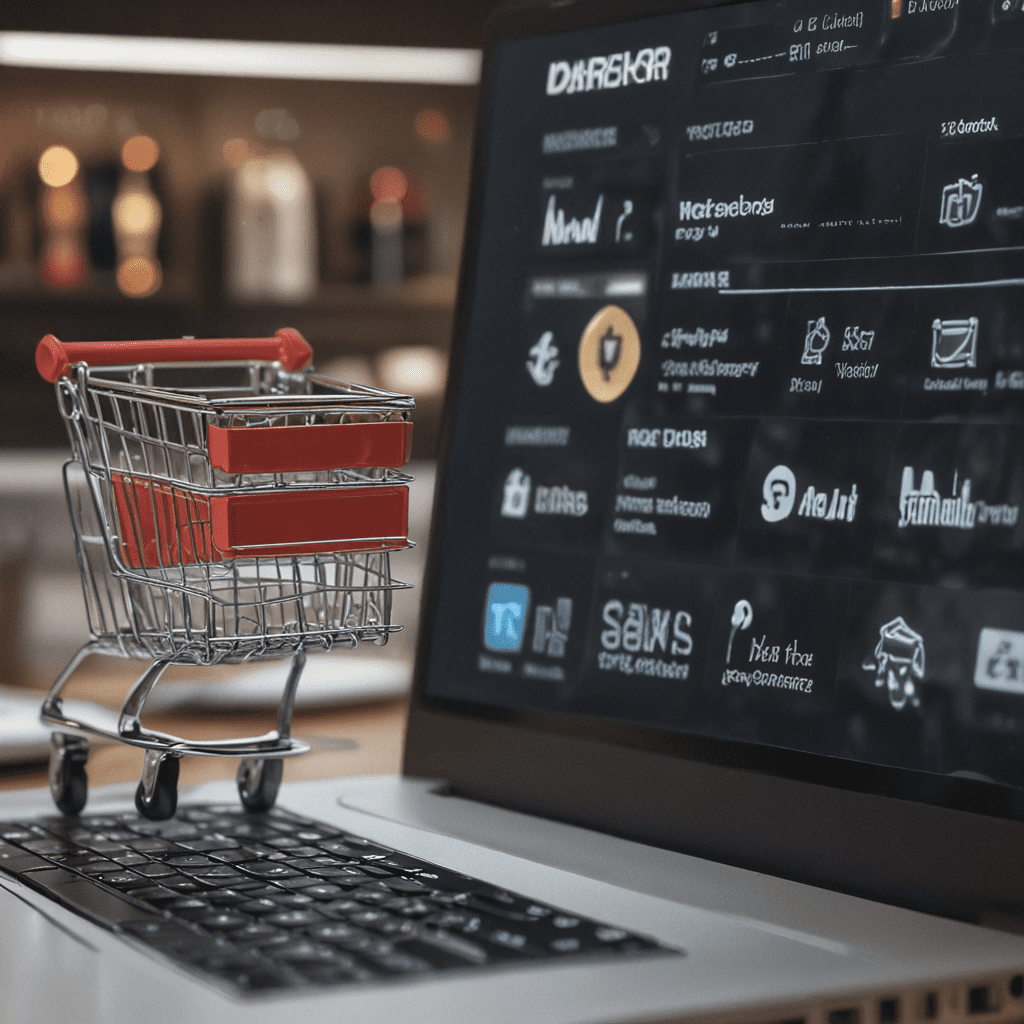
Introduction: Transformation of E-commerce Personalization with SaaS
In the dynamic landscape of e-commerce, personalization has emerged as a crucial factor in enhancing customer engagement, loyalty, and revenue. Software-as-a-Service (SaaS) solutions have revolutionized the personalization landscape, empowering businesses to deliver tailored shopping experiences with unprecedented efficiency and scalability. This article explores the impact of SaaS on e-commerce personalization, examining its benefits, key features, and best practices.
The Rise of SaaS-based Personalization Solutions
The adoption of SaaS personalization solutions has been driven by the increasing availability of customer data, the need for real-time personalized experiences, and the proliferation of e-commerce channels. SaaS providers offer flexible and cost-effective solutions that can be easily integrated into existing e-commerce platforms, enabling businesses to quickly and seamlessly personalize their customers' journeys.
Benefits of SaaS for E-commerce Personalization
SaaS-based personalization solutions offer numerous advantages for e-commerce businesses:
Enhanced Customer Data Collection and Segmentation
SaaS solutions enable businesses to collect and analyze vast amounts of customer data from multiple touchpoints, including browsing history, purchase behavior, demographics, and social media interactions. This data is used to segment customers based on their preferences, interests, and demographics, creating highly targeted and personalized experiences.
Integration with Existing E-commerce Infrastructure
SaaS personalization platforms can be easily integrated with most e-commerce platforms, such as Shopify, Magento, and WooCommerce. This integration allows businesses to leverage existing customer data and infrastructure, reducing implementation time and effort.
Key Features of SaaS Personalization Solutions
SaaS personalization solutions come with a range of advanced features that enable businesses to deliver highly effective personalized experiences:
Machine Learning and AI-Driven Recommendations
SaaS solutions leverage machine learning (ML) and artificial intelligence (AI) algorithms to analyze customer data and make personalized recommendations. These algorithms identify patterns and correlations in customer behavior, enabling businesses to provide highly relevant product recommendations, content, and promotions.
Omnichannel Personalization
SaaS personalization platforms provide a consistent and seamless personalized experience across multiple channels, including websites, mobile apps, email, and social media. This ensures that customers receive tailored recommendations and experiences regardless of their preferred channel of interaction.
Real-Time Experimentation and Optimization
SaaS solutions allow businesses to conduct real-time experiments and optimize their personalization strategies based on performance data. They enable A/B testing of different personalization campaigns and measure their impact on metrics such as conversion rates and customer engagement.
Implementation Strategies for SaaS E-commerce Personalization
Implementing SaaS e-commerce personalization involves careful planning and execution. Best practices include:
- Define Clear Objectives: Determine the specific goals of your personalization initiative, such as increasing conversion rates or improving customer satisfaction.
- Integrate with Existing Systems: Ensure that the SaaS personalization platform seamlessly integrates with your existing e-commerce platform and other relevant systems.
- Collect and Segment Data: Collect and analyze customer data from multiple sources to create detailed customer profiles and segmentation.
- Set Up Personalized Experiences: Create personalized recommendations, content, and marketing campaigns tailored to each customer segment and touchpoint.
- Monitor and Optimize: Regularly monitor the performance of your personalization strategies and make adjustments based on data analysis and customer feedback.
Use Cases and Success Stories
SaaS personalization solutions have been used by e-commerce businesses of all sizes to achieve significant improvements in customer engagement and revenue. Here are some notable use cases:
Personalized Product Recommendations
Example: Amazon uses ML-driven recommendations to suggest relevant products to customers based on their browsing history and purchase behavior, increasing conversion rates by 35%.
Targeted Marketing Campaigns
Example: Sephora uses SaaS personalization to segment customers based on preferences and tailor targeted email campaigns, resulting in a 20% increase in email open rates.
Improved Conversion Rates
Example: Shopify Plus customer, YOOX NET-A-PORTER Group, implemented SaaS personalization to provide personalized product recommendations and content, leading to a 15% increase in conversion rates.
Challenges and Considerations in SaaS E-commerce Personalization
While SaaS personalization offers immense potential, businesses should be aware of certain challenges:
- Data Privacy and Security: Ensure compliance with data privacy regulations and implement robust security measures to protect customer information.
- Scalability: Choose a SaaS platform that can handle the anticipated volume of customer data and traffic, ensuring scalability as your business grows.
- Cost: SaaS personalization solutions can come with recurring costs, so it's important to evaluate the ROI and align it with your business objectives.
Trends and Future Directions in SaaS-powered E-commerce Personalization
The future of SaaS e-commerce personalization holds exciting developments:
- Advanced AI and ML Algorithms: Enhanced AI capabilities will enable even more sophisticated personalized experiences, delivering highly relevant recommendations and content.
- Hyper-Personalization: Personalization will become even more granular, tailored to individual customer preferences and context in real-time.
- Cross-Channel Orchestration: SaaS platforms will enable seamless orchestration of personalized experiences across multiple channels, creating a cohesive and consistent customer journey.
Best Practices for Effective SaaS E-commerce Personalization
To maximize the effectiveness of SaaS e-commerce personalization, follow these best practices:
- Focus on Customer Value: Personalization should provide real value to customers by making their shopping experiences more enjoyable, relevant, and convenient.
- Respect Customer Privacy: Be transparent about data collection and usage, respecting customer privacy and providing opt-out options.
- Monitor and Measure Results: Regularly track and analyze the performance of your personalization strategies to identify areas for improvement.
- Seek Expert Advice: Consider consulting with experts to help you navigate the complexities of SaaS e-commerce personalization and achieve optimal results.
Conclusion: The Future of E-commerce Personalization with SaaS
SaaS e-commerce personalization is transforming the way businesses engage with their customers. By harnessing the power of data, AI, and ML, SaaS solutions enable businesses to deliver highly personalized experiences that drive engagement, loyalty, and revenue. As technology continues to advance, personalization will become even more sophisticated and seamlessly integrated into the customer journey. By embracing SaaS-powered personalization strategies, e-commerce businesses can unlock the full potential of personalized experiences and stay ahead of the competition.
FAQ
Q: What is the difference between SaaS and on-premise personalization solutions?
A: SaaS solutions are hosted and managed by the provider, while on-premise solutions are installed and managed by the business on their own servers. SaaS offers flexibility, scalability, and lower upfront costs, while on-premise provides greater control and customization.
Q: How can I measure the success of my SaaS e-commerce personalization strategy?
A: Track key metrics such as conversion rates, customer retention, average order value, and customer satisfaction. Conduct A/B testing and use analytics tools to measure the impact of personalization campaigns.
Q: How do I get started with SaaS e-commerce personalization?
A: Choose a reputable SaaS provider, integrate it with your e-commerce platform, collect and segment customer data, and create personalized experiences. Monitor results and make adjustments based on data analysis and customer feedback.

